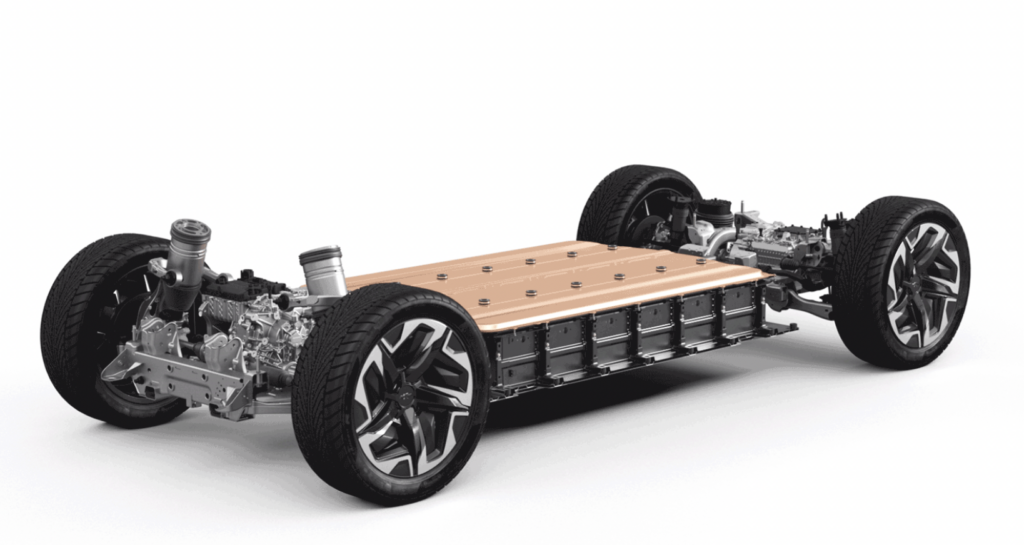
GM: 2024 Silverado EV to be neither unibody nor body-on-frame
By onCollision Repair | Repair Operations | Technology
The BT1 platform that underpins the 2024 Chevrolet Silverado and several other upcoming General Motors EVs represents a new kind of vehicle architecture, according to GM’s chief engineer for battery electric trucks.
The BT1 differs from both body-on-frame construction and unibody construction, the two most common types of vehicle construction, Nichole Kraatz told the online publication GM Authority.
“It is not a unibody and it is not a body-on-frame. We’ve designed a different type of architecture where we have a body that has a floor, but also, the Ultium battery structure is actually a good portion of the structure and those two are connected after the body exits the body shaft. So we’ve defined kind of a new category of vehicle that doesn’t have that traditional body-and-frame approach,” Kraatz told GM Authority Executive Editor Alex Luft in an interview.
Asked how the BT1 architecture should be described, Kraatz said that she has used the term “UltiBody” with her team, “because we have yet to assign one.” The “Ulti” prefix is a reference to GM’s modular Ultium EV platform, described by the OEM as “the foundation of GM’s EV strategy and the driver of the company’s vision for a zero-emissions future.”
Kyle Suba, Chevrolet’s communications lead for the Silverado, elaborated on the construction technique in response to questions from Repairer Driven News.
“Like the GMC Hummer EV, the Silverado EV is a unique design that differs from the traditional body-frame-integral because the Ultium platform serves as the structure, but is not part of the body. It is also not a traditional body-on-frame because there are no body mounts that connect a separate frame to the body,” Suba said.
“The architecture integrates the Ultium battery pack into the fundamental structure of the vehicle, enabling not only our impressive range, but structural benefits. It’s about offering the best solution for each customer depending on their needs.”
Repairing a Silverado EV after a collision “will follow different processes due to the change in architecture,” Suba said, “but will not be markedly more time consuming with the new vehicle structure.” She said that vehicle repair procedures, along with required training, will be shared with dealers closer to launch. GM has said the Silverado EV is expected to reach production in the spring of 2023.
The BT1 platform will also be used in the GMC Sierra EV, GMC Hummer EV, and the upcoming Cadillac Escalade EV. 
GM referred to the “new body architecture” in its January introduction of the new pickup.
“A new body architecture, which efficiently leverages the available 24-module Ultium battery pack as a part of the fundamental structure, enables the vehicle’s impressive range,” GM said. “This structural design integrates the capability Silverado customers have come to expect from a full-size pickup in terms of strength, durability and performance, while also providing a more comfortable, confident ride both on- and off-road.”
“The Ultium Platform enabled our design and engineering teams to start from a clean slate and create a pickup with impressive performance and capability,” Kraatz said in a statement. “The result is a truly impressive testament to the creativity and innovation our teams can bring to market with speed and at scale.”
As of late Wednesday, GM had not responded to questions from Repairer Driven News about the repairability of the new design, or whether authorized collision repair shops would need to acquire new equipment or training to repair them.
Design flexibility
GM said the wind-cheating front-end design of the Silverado will give it one of the lowest drag coefficients of any available production full-size pickup truck, helping to boost range.
The truck will be offered only in Crew Cab models, with a short front overhang that should improve forward vision. The front will be occupied by what GM calls an eTrunk, a lockable, weatherproof compartment.
“We had no constraints when it came to designing the Silverado EV with dramatic style and flexible utility because we didn’t need to work around a traditional propulsion system,” Phil Zak, executive director of Chevrolet Design, said in a statement. “The Ultium Platform allowed us to redefine what it means to offer expansive new storage and utility possibilities.”
On the RST version, an available Multi-Flex Midgate can expand the storage capacity of the 5-foot, 11-inch bed.
The Silverado EV will also feature GM’s first use of Ultifi, a new Linux-based software platform developed in-house. GM said Ultifi would allow for rapid and frequent software updates, and “give drivers the opportunity to evolve their vehicles over time, enhancing both the capabilities and accessing cloud services in a flexible and fast way.”
More information
The Pickup Reimagined: Introducing the 2024 All-Electric Chevrolet Silverado
Images
Featured image: The 2024 Silverado EV RST. (Provided by Chevrolet)
GM’s modular Ultium platform. (Provided by GM)
